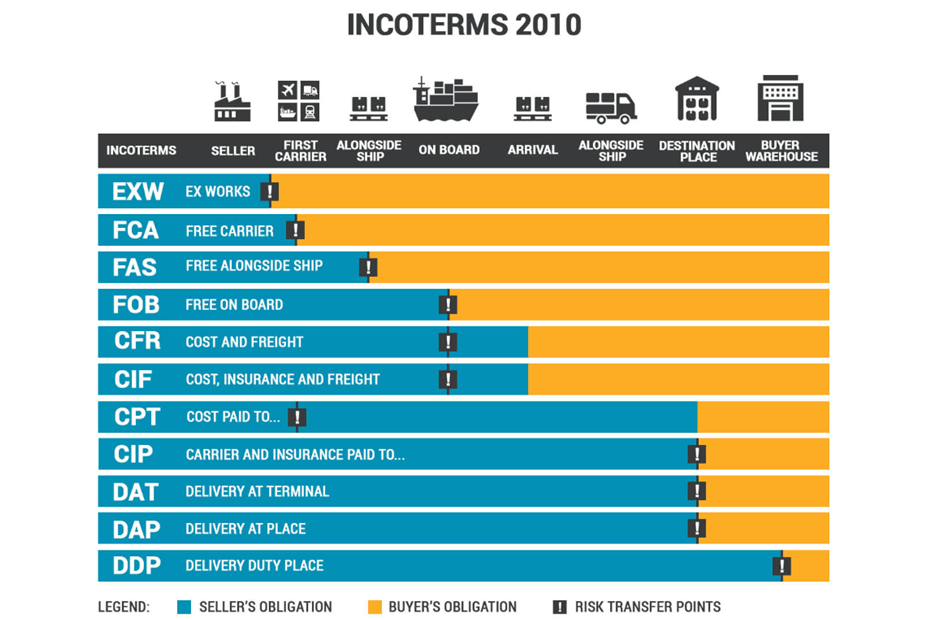Incoterms
Contains only the EXW incoterm and puts the least amount of financial pressure on the seller. He has just the minimum obligation, and the point of delivery is his address – work office or warehouse. Afterward, the responsibility and further transport transfers to the buyer.
Three incoterms appear in this group: FOB, FAS, and FCA. This time, there is more burden on the seller. He has to pay for the insurance of the goods until Free on Board or until the carrier takes over the shipment. In addition to that, he has to hand over the bill of lading to the buyer, along with other necessary documents.
It consists of four incoterms: CFR, CIF, CPT & CIP. Similar to the previous one, the seller now has to pay additional expenses that happen after the buyer takes over the risk. Those include freight or carriage charges, as well as Cargo Insurance premium (CIF and CIP).
It includes three incoterms: DAP, DAT & DDP. This category assigns even more responsibility to the seller. Furthermore, the point of the delivery is the final destination – for example, the buyer’s warehouse. However, if the contract maintains that the delivery should be at a different place, then the seller completes the delivery once he transfers the goods to the buyer’s collecting vehicle.
